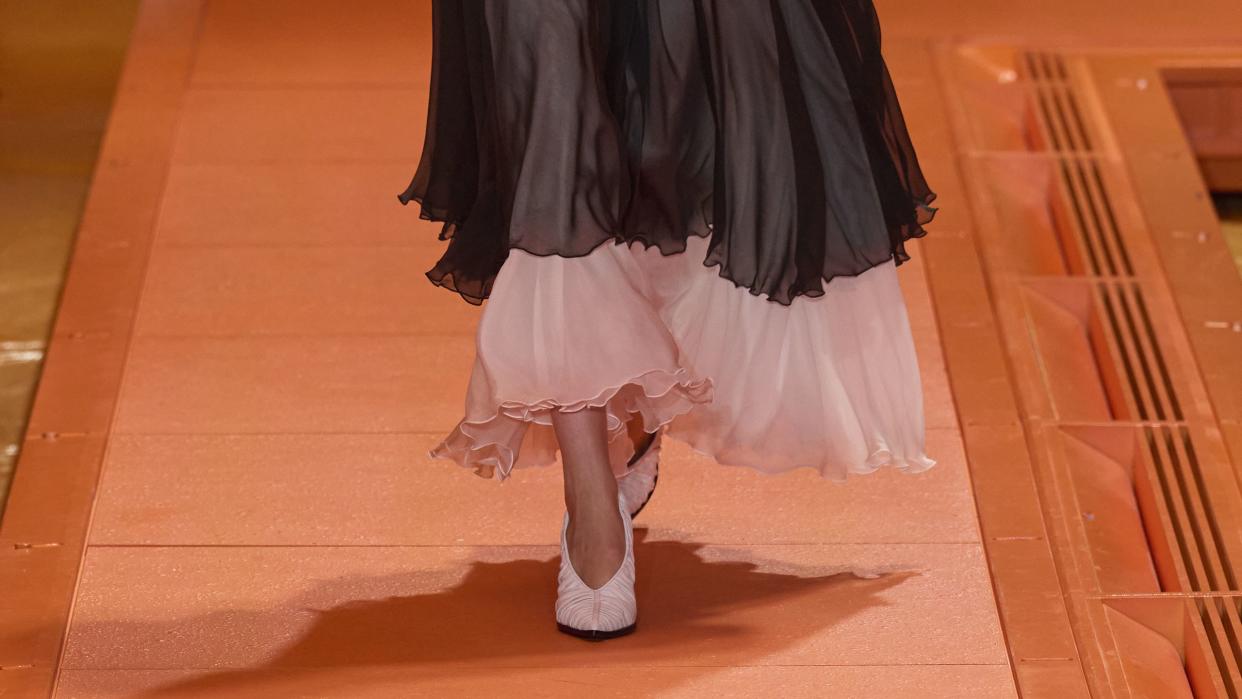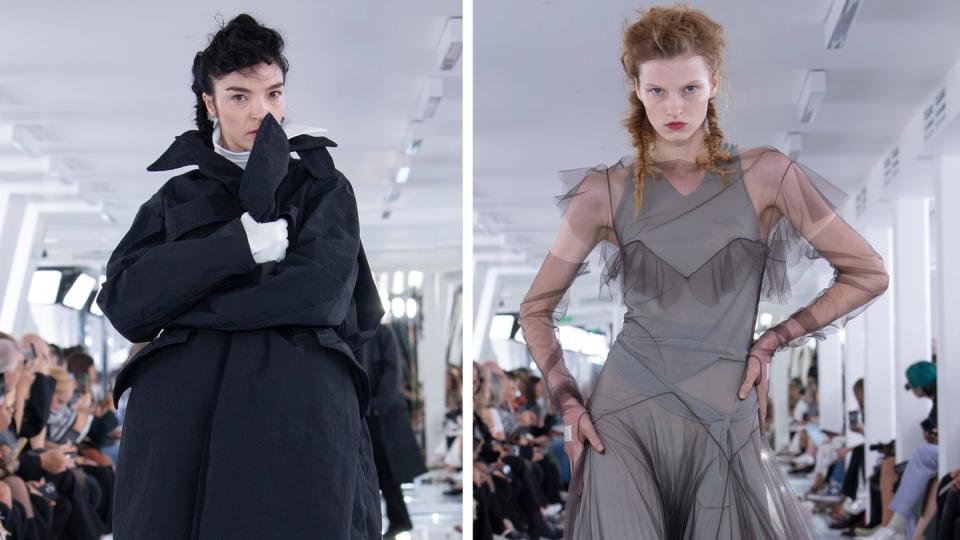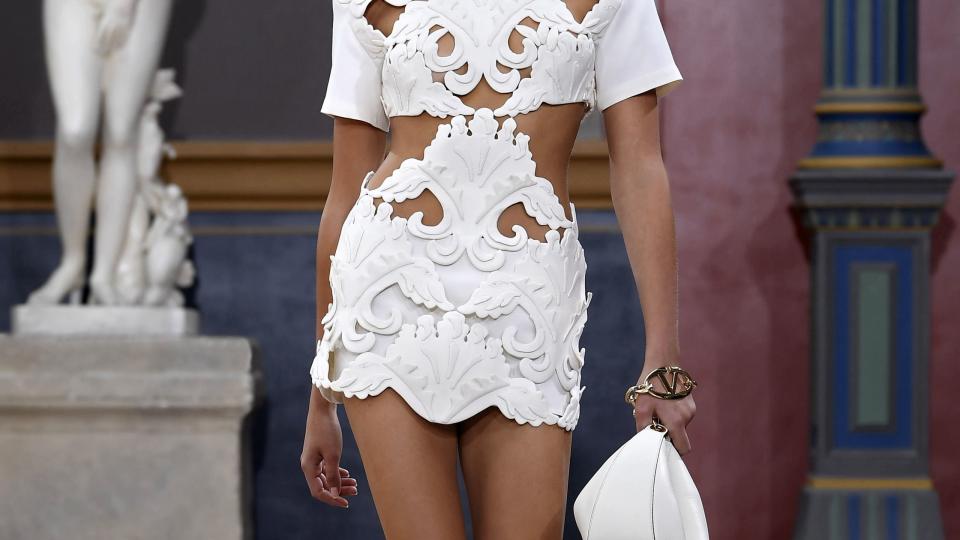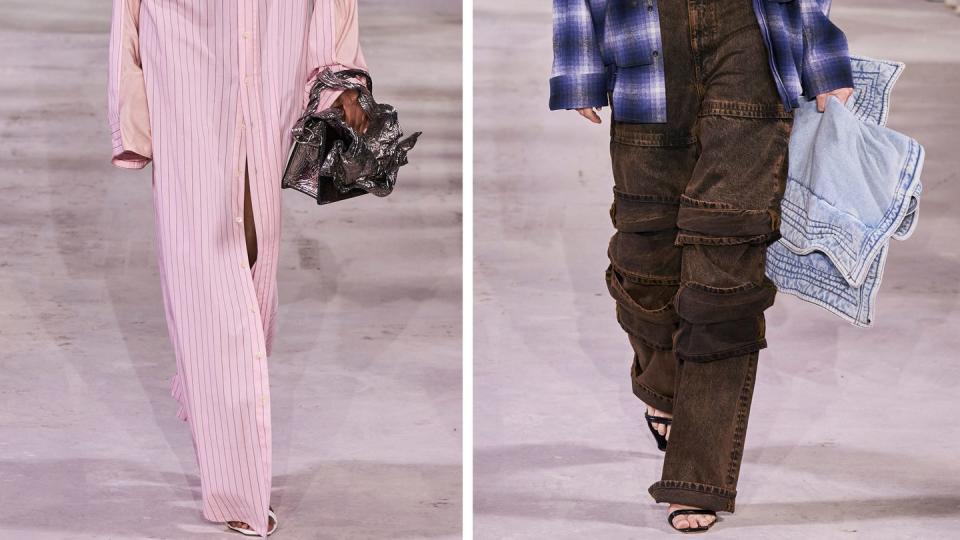Are We Slowly Climbing Out of the Era Void?

For the past two years, fashion has felt lost. Somewhere post-pandemic, we took a turn into a world without road signs, a place ruled not by agenda-setting trends but by short attention spans and -eras and -cores. The social media-created micro moments have been fun—hello “dark academia”—but we’ve been looking backwards, or into a void, and what the hell are we all wearing?
This season however provided a sort of blinking light at the end of the tunnel. While shoppable, wearable clothes were very much a focus for many brands, they felt like they were taking us somewhere—and not just through a marketing funnel, bottom to top. There were detectable trends—including fringe, shorts, bomber jackets, trench coats, workwear, movement and disheveled prep—as well as storytelling. This season, designers balanced merchandising with world-building, creating character-driven plots and personal narratives that make us imagine the future, beyond what we’re seeing in the zeitgeist and on our screens (thank god for the tapering off of Tár mania and Barbie-core—enough!).
You could sense this change in direction starting in New York, with several fantastic collections including Willy Chavarria, Proenza Schouler, and Tory Burch, and in London, with Erdem, but it was probably best set in motion in Milan with Prada and later Matthieu Blazy’s transportive collection for Bottega Veneta.
In Paris, those who told the most impactful tales this season included Francisco Risso at Marni and Julien Dossena at Rabanne, the latter of whom gave us divine glamazons draped in silver and gold chainmail and textured boucle knit dresses. Then there was Rick Owens, a master of dreams. This season, the designer turned to optimism, a feeling that turned into into body-hugging strapless gowns and cropped leather jackets with peaked shoulders that came down a concrete runway at the Palais de Tokyo as rose petals fell from above and pink and pastel-hued fog billowed from machines at the base of steps.
And, of course, we can’t forget about Demna, who featured some of his nearest and dearest friends, family and colleagues—the people in his life who inspire him to make clothes—in his Balenciaga show.

At the end of the week, it was Nicolas Ghesquière and John Galliano that masterfully configured the art of storytelling with the act of trend-setting. At Louis Vuitton, Ghesquière showed long, flowing charmeuse skirts and sporty jackets, trousers with suspenders and off-the-shoulder corset tops, and a trio of puffed double-breasted coats and mini skirts. His collection had no show notes and he didn’t speak of any whimsy around what inspired him, which makes the clothes all the more inflated with possibility.
Like several of his peers this season, Ghesquière let the clothes do the talking. It was a collection made for a journey, for moving, and for finding fresh prospects in nostalgic ready-to-wear: big low-slung belts paired with low and wide belt loops constructed to match, breezy pajama pants, and a wacky version of a thong heel with one toe out and the others covered. Something for the Tabi-obsessed TikTokers perhaps?

And at Maison Margiela, Galliano once again designed a collection inspired by his own fictional characters: Count and Hen. This time, we were brought into the world of Count and Hen’s parents and, specifically, the moment they came together on a ship from England to America. Galliano used this imaginary meet-cute to frame his designs, which were meant to evoke a sense of inherited style, or clothes being passed on from one generation to the next—a truly refreshing and thought-provoking concept after living through the height of Regency-core.
The tailored black coats, clutched dramatically by the models who stomped and glided down the runway, were wardrobe items waiting to be treasured. The same goes for the deconstructed bustiers and inside-out silhouettes, especially a transparent gray gown with delicate pleating and ruffles at the bodice. Galliano used materials like tape and pieces of ripped bows to adorn or hold up some of the fabrics. It was a collection that had things to covet, things to wear, but also things to make us dream about where our clothes have been and where they might go.

More garments that spoke volumes about the marriage of wearability and creativity were handed to us by the likes of Valentino, Loewe, and Y/Project. At Valentino, Pierpaolo Piccioli continues to be a leader with his penchant for contemporarily minded femininity. His white dresses, in particular, were sculpted to the body in a way that was perfectly sensual without being too precious. The same goes for the cutout tops and loose, easy jeans. It was elevated without being aloof, which was also the case at Loewe and Y/Project, both of which always border on surreal and totally weird but somehow hit every time with the masses. Where Jonathan Anderson at Loewe gave us ultra high-waists peeking out from low V-necklines, Glenn Martens at Y/Project provided shirts and dresses with torqued collars. Every piece was wearable, but just a little fucked up and rough around the edges—things to up the ante on any of your normcore.

In the end, don’t expect the -cores and -eras to disappear. But this season, the designs were strong enough that we don't need to make anything up. They spoke for themselves.
You Might Also Like


